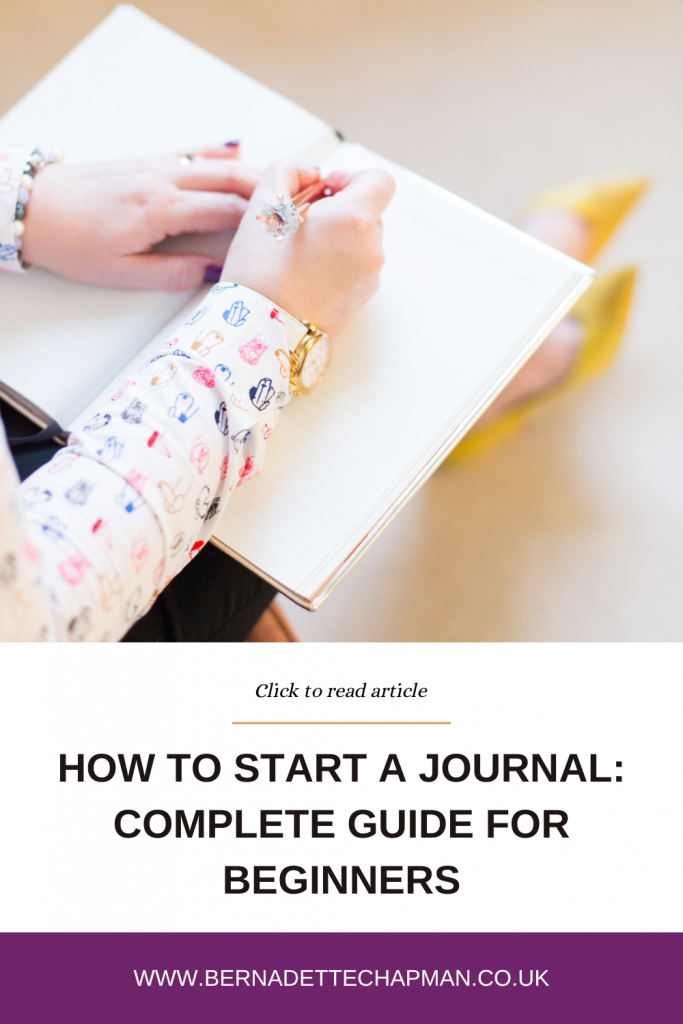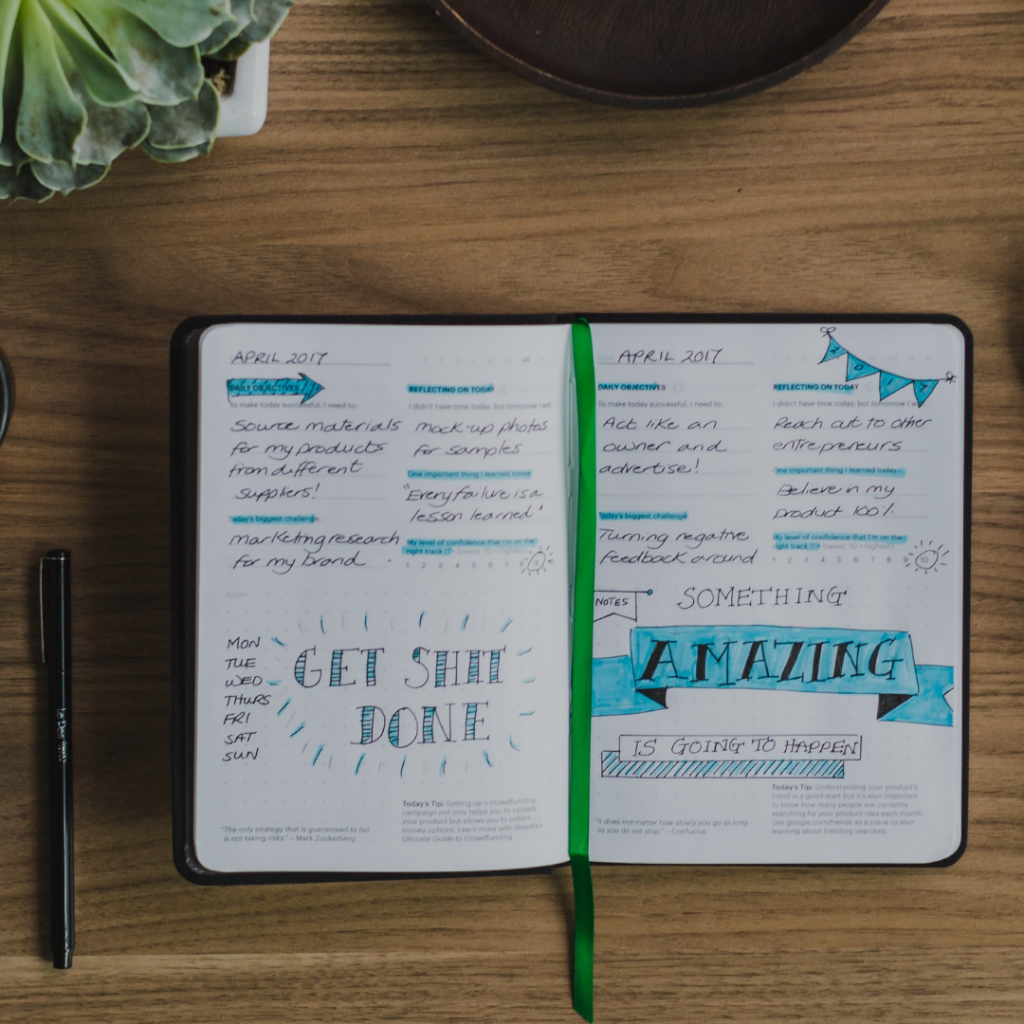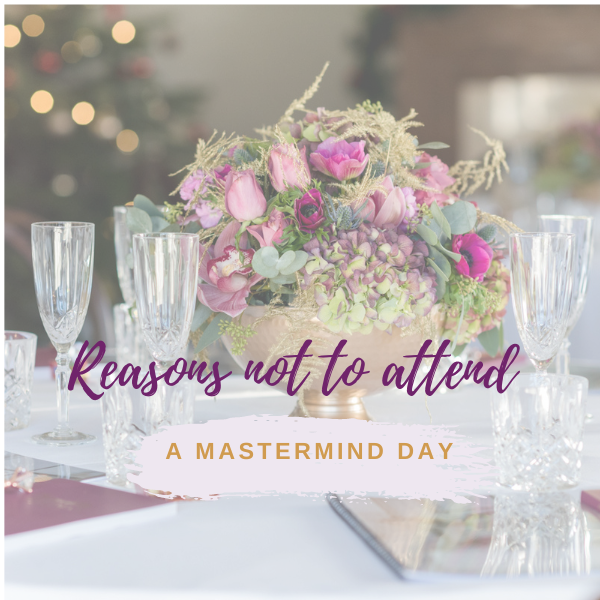If you have been thinking about journaling, or have started in the past but failed to keep it up then this article is just for you. Go grab a drink and read on for my complete guide to journaling as an entrepreneur. Learn how to start your journaling , what to use and what to write.
I was first introduced to journaling in 2016 when I started working with my first coach. I struggled to fill a page and despite loving writing, found it so difficult. However fast-forward a few years and it is now an important part of my self-development. Sometimes I may only write one page but other days it can be 5 pages (or more), it depends on my mental state and if I need to offload ideas and concepts into my journal.
But from working with clients I appreciate that creating the habit of journaling can be hard. Therefore I have put together this simple guide to journaling along with 31 prompts to get you started!

Prefer to watch my video instead?
1. Science Behind Journaling
Journaling is incredibly beneficial for our physical and mental health. Studies have found it can reduce the frequency of negative thoughts and help those suffering with depression. In fact journaling can most definitely help those who suffer with anxiety and/or depression. It’s a place to note down all those negative thoughts but then respond in an analytical way.
When working with clients I have a series of activities to help negativity, lack of confidence, imposter syndrome which all involve writing and analysing in some form.
By journaling about the rough days it in turn gives you the strength to deal with such days and move onwards and upwards.
There are physical, cognitive, and emotional benefits from expressive writing (Baikie & Wilhelm, 2005):
- Lowered blood pressure
- Improved lung and liver function
- Less time spent in hospital
- Better moods
- Improved psychological wellbeing
- Fewer depressive and avoidance symptoms
- Reduced stress-related visits to the doctor
- Less work absenteeism
- Higher student grade averages
Including gratitude within journaling helps you feel blessed and increases positivity.
Fredrickson, 2010, p. 187
2. Creating a habit to journal
The most successful way to start journaling is to make it a daily habit, it can take 66 days to form a new habit so the best thing to do when you start is to schedule journaling in and ideally assign to another habit.
- Journal the same day and time
- Don’t skip a day, if busy just use a few prompts and a gratitude instead
- Habit stack, attach journaling to another habit. Here are 2 examples.
- After I pour my cup of tea each morning, I will journal for 20 minutes
- After I get into bed at night, I will journal and reflect on my day
(If you want to learn more about your subconscious mind and our habits sign up to my FREE 5 day masterclass called Confidently Scaling below.)

3. What to use
You have two choices; either use a notebook and pen to write your thoughts down. Or use a computer / app which allows you to attach links, images etc.
Personally I prefer notebooks and I keep them all to read back over. I feel the physical act of writing cursively in my notebook helps me release emotions and retain information.
However I know this doesn’t work for everyone, some people like the speed of being able to type their thoughts out before moving on.
Unsure which method is right for you? Why not test it out, spend one week writing in a notebook and the second week typing. Which one felt more in flow? Which method gave you the release and aha moments?

4. When to journal?
I journal in the morning as part of my morning routine, but I know many others choose to journal at the end of the day. Like I have discussed many times in the past, you get to choose the rules so when would feel good to you? Is your journaling a place to work through ideas or a place for reflection?
- Morning: Sets you up positively for the day and helps you prioritise what needs to be done
- Evening: Helps you reflect on the day, what is your learnings from all that happened?
Why not test morning and evening out?
5. Where to journal
I personally love journaling away from my desk, so this could be in the garden when its warm or curled up on the sofa in the winter. I remove any digital devices so I am not interrupted whilst journaling and light one of my many scented candles.
6. FREE Writing
This is allowing all your thoughts to empty from your head and put them onto your notebook. Doesn’t need to be perfect, sometimes when free writing my pen is not going as fast as my thoughts! The result is very messy handwriting.
I personally feel this is such a powerful way to journal but it can be challenging when you first start. Once you have “dumped” your thoughts into your journal you can go back to read and analyse, what did your words mean? What is your subconscious telling you?
You may wish to set yourself a set amount of time to write or set the intention to write so many pages. Personally I just go with the flow!

7. Using Prompts
If you sometimes struggle with what to write you may wish to start with some prompts instead. This can help you start the writing and often doing so the free writing follows shortly after. I do a mix of both, I start with some prompts then I move onto free writing.
I have created 31 different prompts for you to use including some of my absolute favourites, just click below to receive it.
8. Bullet Journaling
This is a way of organising your thoughts, you can customise it to suit your personality. However little caveat for the perfectionists, your journal is for you and only you. It does not need to be perfect. Spend more time writing then designing it!
So what is bullet journaling? In essence it is a mindfulness practice hidden as productivity tool, it’s a combination of your diary, calendar , to do list and mindfulness habits. Originally devised by Ryder Carroll so please do go check out his resources for more information as I do not bullet journal personally.
To start buy a dot grid journal that lays flat, then a selection of non smudge pens. Although you can buy bullet journals the method is aimed at you creating your own, make it as artistic or plain as your desire. You will need to set aside some time to create your journal first.
Think about what you want your bullet journal to do.
- Track goals
- A diary
- To do list
- Habit tracker
- Affirmation lists
- Notes
- Monthly planner
- Vision planning
- Meal planner
- Books to read
Then create your index with a selection of keys (this saves you have to write long form each time). The key as suggested by the bullet journal creator is below but feel free to make up your own. You will also want to number all your pages.
Tasks: •
Events: O
Notes (facts, ideas, and observations): —
Priority: *
Inspiration (mantras, insights, and ideas): !
Then it’s a matter of designing all the relevant pages to include your relevant sections.
My View:Despite working in the creative industry I am not creative, so for me bullet journaling is my kind of hell. Whereas some people would love spending time designing their bullet journal I would find this a chore. It just isn’t for me, I use lined notebooks and predominately use a combination of free writing and prompt journaling. But I know some people will prefer a more artistic way of expressing and recording their thoughts.

9. Don’t let perfectionism stop you
It’s important to remember there is no wrong or right way to journal.
Your handwriting doesn’t need to be perfect, it’s ok if it’s ineligible at times.
Don’t worry if it looks messy, feel free to add bullets, arrows, diagrams and mind mapping. In fact anything goes because it’s YOUR journal. Journaling should be relaxing, but striving for perfectionism within your journal will result in you becoming stressed. So even if life is beautifully aesthetic, go beyond the pretty with your journaling and just get it done.
10. Suffering from writers block?
It happens to us all, you sit down to journal but nothing comes out. Try journaling at a different time of day or location, sometimes we just need a change of scenery.
Give yourself permission to be honest in your journaling, if your subconscious is trying to stop you from releasing that what hurts, you wont be able to move forward.
Some days the words wont flow so instead use the time to write down some affirmations, gratitude’s and journal prompts. By including different prompts it helps you stay connected to your journaling. Download my 31 days of prompts to get you started!
Feel free to draw, doodle and even create mind maps. The key is, this is your journal, for no-one else, so do whatever feels right to you.
Closing thoughts
For me it is a place where I can stay connected to my vision and explore how to make it happen. It has been fabulous for my mindset especially on those days I feel low and my mind monkeys are playing havoc with my confidence.
Although I write all my goals down as part of my strategy, exploring them in my journal allows me to be more open. It’s also a great place for my ideas to form for services, events or content to produce.
Has this article tempted you to start journaling for your own self development?
To up-level your business in 2023 book a call with me below and we can discuss how I might be able to help you. Or have a look at the different 1:1 services I currently offer.
Further reading
Confidently Scaling 5 Day Masterclass
90 day planning with FREE download
Benefits of journaling for mental health -positive psychology
Bullet journal creator, Ryder Carroll



